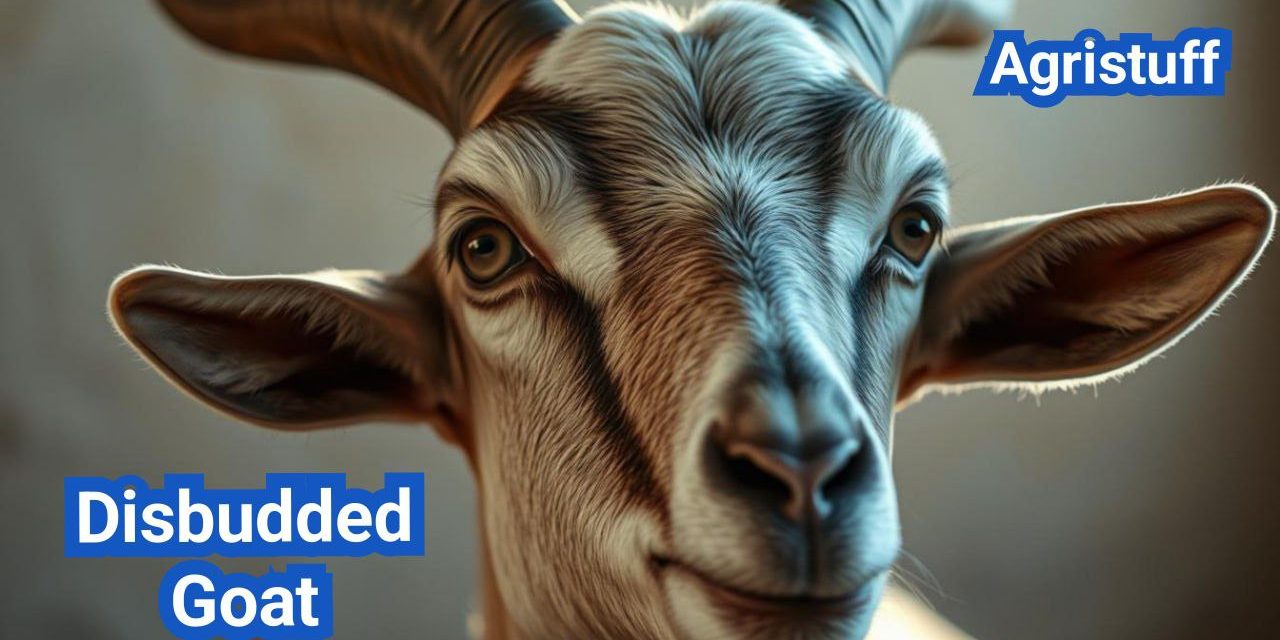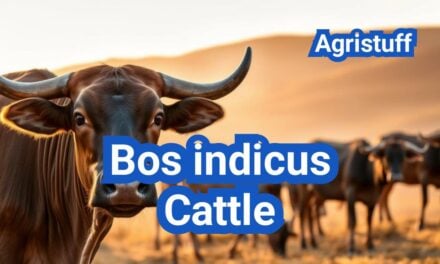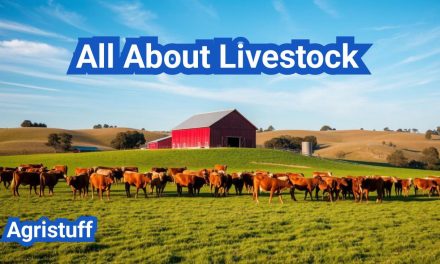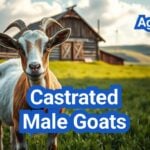Understanding the concept of a disbudded goat is crucial for goat owners who prioritize the safety and well-being of their animals. Essentially, a disbudded goat is one that has undergone a procedure to remove the horn buds, preventing the growth of horns. This practice is vital for enhancing the safety of both the goats and their handlers.
The process of disbudding involves removing the horn buds of young goats, which is a critical practice in goat management. By doing so, it prevents horn growth, reducing the risk of injury to the animals and their handlers. The importance of understanding goat disbudding techniques and the significance of pain management during disbudding cannot be overstated.
Key Takeaways
- Disbudding is a critical practice in goat management that enhances safety.
- A disbudded goat has undergone a procedure to prevent horn growth.
- Understanding goat disbudding techniques is essential for effective horn removal.
- Pain management during disbudding is crucial for animal welfare.
- Disbudding prevents injuries to both goats and their handlers.
Understanding Disbudded Goats and Horn Removal
The term “disbudded goat” refers to a goat that has undergone a specific procedure to prevent horn growth. Disbudding is a common practice in goat farming, aimed at reducing the risk of injury to both humans and other animals.
What Does “Disbudded Goat” Mean?
A disbudded goat is one that has had the horn-producing cells destroyed, typically at a young age, to prevent the growth of horns. This procedure is usually performed before the horns have fused to the skull, making it a more straightforward and less invasive process than dehorning. The goal of disbudding is to prevent horn growth while minimizing pain and stress for the animal.
Disbudding is often performed on goat kids within the first few weeks of life. It’s a critical period because the horn buds are still separate from the skull, making the procedure less complicated.
The Difference Between Disbudding and Dehorning
While both disbudding and dehorning aim to remove or prevent horns, they are distinct procedures with different timing and methods. Dehorning involves removing existing horns, usually performed on older goats. This procedure is more invasive and can be more stressful for the animal.
| Procedure | Timing | Method |
|---|---|---|
| Disbudding | Before 2 weeks of age | Destroying horn-producing cells |
| Dehorning | After horns have developed | Removing existing horns |
Understanding the difference between disbudding and dehorning is essential for goat owners to make informed decisions about their animal’s care.
Why Consider Disbudding Your Goats?

The decision to disbud goats is multifaceted, involving considerations of safety, management, and animal welfare. Disbudding, the process of removing the horn buds from young goats, is a practice that has been adopted by many farmers to reduce the risks associated with horned goats.
Disbudding enhances safety within the herd and for the handlers. Horned goats can be aggressive towards each other, and the presence of horns increases the risk of injury during fights. Moreover, handlers are at risk of being injured by the horns of aggressive or frightened goats.
Safety Benefits for Herd and Handlers of Disbudded Goat
One of the primary reasons farmers choose to disbud their goats is to improve safety. Horns can cause significant injuries to other goats during fights, and to handlers when they are restraining or managing the goats. By removing the horn buds early in a goat’s life, farmers can significantly reduce these risks. Disbudding is particularly important in mixed-age or mixed-sex groups where aggression can be more pronounced.
Furthermore, disbudding can make managing and handling goats easier and safer. Without horns, goats are less likely to cause injury during routine handling, such as vaccinations, hoof trimming, or milking. This not only protects the handlers but also reduces stress on the animals, as they are less likely to be involved in horn-related conflicts.
Pros and Cons of Disbudding of Disbudded Goat
While disbudding offers several benefits, it is not without its drawbacks. Understanding the pros and cons is crucial for making an informed decision.
Benefits for Goat Management
Disbudding simplifies goat management by reducing aggression and the risk of injury among the herd. It also makes handling easier, as goats without horns are generally less dangerous to work with. Additionally, disbudding can be seen as a preventive measure that reduces the need for future interventions, such as dehorning, which can be more complicated and risky.
The practice can also contribute to a more harmonious herd environment, potentially reducing stress among the animals. This can be particularly beneficial in intensive farming systems where goats are in close proximity to each other.
Potential Drawbacks to Consider
Despite its benefits, disbudding has potential drawbacks. The procedure itself carries risks, such as infection or improper healing if not done correctly. There’s also the consideration of pain management during and after the procedure, as disbudding can be painful for the animals. Farmers must weigh these risks against the benefits and consider their ability to provide appropriate care and pain management.
Additionally, some argue that disbudding is an unnecessary alteration of the animal’s natural state, raising ethical considerations. Farmers must consider these ethical implications and ensure that any decision to disbud is made with the welfare of the animals as the top priority.
The Science of Goat Horn Growth
The growth of horns in goat kids is a critical area of study for those involved in goat husbandry. Horns are a natural part of a goat’s anatomy, and their development is influenced by a combination of genetic and environmental factors.
Horn Development in Kids | Disbudded Goat
Horn development in kids begins at an early age. Horn buds are typically noticeable within the first few weeks of life, and they start to grow rapidly. The horn growth is made of keratin, the same protein that makes up human hair and nails. As the kid grows, so do the horns, and their development is closely linked to the overall health and nutrition of the animal.
The stages of horn development are crucial for determining the optimal time for disbudding. Understanding these stages helps farmers and veterinarians make informed decisions about the care of their goats.
Differences Between Buck and Doe Horn Growth
There are notable differences in horn growth between bucks and does. Generally, bucks tend to have larger and more robust horns compared to does. This is due to the hormonal influences that affect horn growth, with bucks having higher levels of testosterone that promote horn development.
In contrast, does may have smaller horns or, in some breeds, may be naturally polled. The differences in horn growth between the sexes are important to consider when managing a goat herd, especially when it comes to disbudding practices.
When Is the Right Time to Disbud?

Determining the right time to disbud goat kids is crucial for the success of the procedure and the animal’s well-being. Disbudding, when done at the optimal age, minimizes stress and potential complications, ensuring a safer process for both the goats and the handlers.
Optimal Age for Disbudding | Disbudded Goat
The optimal age for disbudding goat kids is typically between 3 to 14 days old. At this age, the horn buds are still underdeveloped, and the kids are less stressful to handle. Disbudding at this early stage also reduces the risk of complications and promotes faster healing.
Disbudding too early (before 3 days) can be risky due to the difficulty in identifying the horn buds, while disbudding too late (after 14 days) can lead to more significant stress and potential complications due to the increased size of the horn buds and the kids’ increased activity and strength.
Signs That Horn Buds Are Ready for Removal
Before disbudding, it’s essential to check for signs that the horn buds are ready for removal. These signs include the presence of a slight bump or a small, raised area on the kid’s head where the horn will grow. The skin over the horn bud should be checked for any signs of attachment to the underlying bone, as this can affect the disbudding process.
Observing these signs and disbudding at the optimal age ensures a more effective and safer procedure. It’s also crucial to monitor the overall health and condition of the kids before proceeding with disbudding.
Essential Tools and Supplies for Disbudding
Disbudding goats requires specific tools and supplies to ensure a safe and effective procedure. The right equipment is crucial for the well-being of the animal and the success of the disbudding process.
Disbudding Irons and Equipment
The most critical tool for disbudding is the disbudding iron. It’s used to remove the horn buds by applying heat.
Hot Iron Options (Including Rhinehart X50)
Hot iron disbudding is a common method, with irons like the Rhinehart X50 being highly regarded for their quality and effectiveness. The Rhinehart X50 is known for its durability and ability to maintain high temperatures, making it ideal for hot iron goat disbudding.
Restraining the goat is essential for a safe disbudding procedure. Disbudding boxes are designed to hold the kid firmly in place, minimizing movement and stress during the process.
Safety and Restraint Equipment | Disbudded Goat
In addition to disbudding irons, safety and restraint equipment are vital. This includes gloves, masks, and the disbudding box itself, all of which help protect both the handler and the goat from potential harm.
Pain Management Supplies | Disbudded Goat
Pain management disbudding is a critical aspect of the procedure. Supplies such as local anesthetics and anti-inflammatory medications are used to minimize the kid’s discomfort. It’s essential to consult with a veterinarian to determine the best pain management strategy.
By having the correct goat disbudding equipment and supplies, you can ensure a smoother and more humane disbudding process.
Pain Management for Disbudding Goat Kids
Disbudding goat kids requires careful consideration of pain management strategies to prevent unnecessary suffering. Effective pain management is not only a welfare concern but also crucial for reducing stress and promoting recovery in young goats.
Cornual Nerve Block Technique | Disbudded Goat
The cornual nerve block is a widely recommended technique for managing pain during disbudding. This procedure involves administering a local anesthetic to block the nerves that supply the horn bud area. By doing so, it significantly reduces the pain experienced by the goat kid during and after the disbudding process. The technique requires precision and should ideally be performed by someone with experience, such as a veterinarian.
Key steps in performing a cornual nerve block include:
- Identifying the correct location for the nerve block
- Using the appropriate dosage of local anesthetic
- Ensuring the procedure is done under sterile conditions to prevent infection
Sedation and Analgesia Options | Disbudded Goat
In addition to the cornual nerve block, sedation and analgesia can play a vital role in pain management during disbudding. Sedatives help in calming the goat kid, reducing stress and anxiety, while analgesics provide additional pain relief. The choice of sedation and analgesia should be made in consultation with a veterinarian to ensure the most appropriate options are selected based on the age, size, and health status of the goat kid.
Working with Your Veterinarian | Disbudded Goat
Collaboration with a veterinarian is essential for developing an effective pain management plan for disbudding goat kids. Veterinarians can provide guidance on the most appropriate pain management strategies, including the use of nerve blocks, sedation, and analgesia. They can also assist in monitoring the goat kids post-disbudding to ensure that any complications are addressed promptly.
By prioritizing pain management and working closely with veterinary professionals, goat farmers can ensure that their disbudding practices are both humane and effective.
Step-by-Step Disbudded Goat Process

The hot iron disbudding method is a widely accepted technique for removing horn buds in young goats. This procedure, when done correctly, ensures the safety and well-being of both the goat kids and the handlers. The process involves several critical steps that must be followed meticulously.
Preparation Steps of Disbudded Goat
Before proceeding with disbudding, it’s essential to prepare both the equipment and the goat kid. This includes ensuring the hot iron is at the correct temperature, typically between 500°C to 600°C, and having the necessary restraint equipment ready. The area should be clean and free from distractions to minimize stress on the animal.
Proper Restraint Techniques of Disbudded Goat
Restraining the goat kid is crucial for the safety of both the animal and the person performing the disbudding. The kid should be held firmly but gently, with its head securely positioned to allow easy access to the horn buds. Various restraint methods can be used, including manual holding or using a specialized goat restraint device.
Hot Iron Disbudding Method | Disbudded Goat
The hot iron disbudding method involves applying a heated iron to the horn bud to destroy the cells that produce the horn. This process requires precision to ensure that the entire horn bud area is treated.
Identifying the Horn Bud | Disbudded Goat
The first step in the hot iron disbudding method is identifying the horn bud accurately. The horn bud is typically a small, rounded area on the goat kid’s head, and it’s crucial to locate it precisely to ensure effective disbudding.
Proper Iron Application | Disbudded Goat
Once the horn bud is identified, the hot iron should be applied with a gentle, consistent pressure to cover the entire bud. The iron should be held in place for a few seconds to ensure a complete burn. It’s essential to avoid applying too much pressure, which can cause unnecessary damage.
Complete Burn and Cap Removal | Disbudded Goat
Achieving a complete burn is critical for successful disbudding. After the procedure, the burned area should be inspected to ensure that the horn bud has been fully destroyed. Any remaining parts of the bud or “cap” should be removed carefully.
Aftercare Immediately Following Procedure | Disbudded Goat
After disbudding, the goat kid requires immediate care to prevent infection and promote healing. This includes monitoring the disbudded area for signs of infection, keeping the area clean, and providing appropriate pain management as advised by a veterinarian.
By following these steps, goat farmers can ensure a safe and effective disbudding process for their animals.
Alternative Disbudding Methods

The quest for more humane and effective disbudding techniques has led to the development of alternative methods. While hot iron disbudding remains a common practice, other approaches are gaining recognition for their potential to reduce pain and stress in goat kids.
Chemical Paste Disbudding | Disbudded Goat
Chemical paste disbudding is an alternative that involves applying a caustic paste to the horn buds. This method is considered less invasive than hot iron disbudding and can be effective when applied correctly. The paste works by destroying the horn-producing cells, thereby preventing horn growth. However, it’s crucial to follow the manufacturer’s instructions and take necessary precautions to avoid skin irritation or other adverse effects.
Band Disbudding for Older Goats | Disbudded Goat
Band disbudding, also known as rubber ring disbudding, is a method used primarily for older goats. It involves placing a rubber ring around the base of the horn, which cuts off blood flow and eventually leads to the horn’s necrosis and fall-off. This method is considered more suitable for older kids or adults, as it can be less effective for very young animals.
Surgical Options | Disbudded Goat
Surgical disbudding is another alternative, typically performed by a veterinarian. It involves the surgical removal of the horn buds and is often considered for older animals or in cases where other methods are not feasible. While effective, surgical disbudding carries the risks associated with any surgical procedure, including infection and prolonged recovery times.
Each of these alternative disbudding methods has its advantages and disadvantages, and the choice of method depends on factors such as the age of the goat, the expertise of the person performing the procedure, and the specific needs of the farm or operation.
Breed-Specific Disbudding Considerations

When it comes to disbudding goats, breed-specific factors play a crucial role in determining the best approach. Different breeds have unique characteristics that can affect the disbudding process, making it essential for breeders to understand these differences to ensure a safe and effective procedure.
Dairy Breeds vs. Meat Breeds | Disbudded Goat
Dairy breeds, such as LaMancha and Saanen, often require more precise disbudding due to their horn growth patterns and the need to prevent injuries during milking processes. In contrast, meat breeds like Kiko and Spanish may have different horn growth rates and may be more prone to horn-related injuries if not disbudded properly.
The table below highlights some key differences in disbudding considerations between dairy and meat breeds:
| Breed Type | Horn Growth Pattern | Disbudding Considerations |
|---|---|---|
| Dairy Breeds | Faster horn growth, often more symmetrical | Precise disbudding crucial, risk of milking injuries |
| Meat Breeds | Variable horn growth rates, sometimes asymmetrical | Focus on preventing horn-related injuries |
Special Considerations for Pygmy and Boer Goats
Pygmy goats and Boer goats have distinct characteristics that require special attention during disbudding. Pygmy goats, being smaller, may require more delicate handling and potentially smaller disbudding irons. Boer goats, known for their rapid growth, may need earlier disbudding due to their fast-developing horn buds.
Understanding these breed-specific considerations is crucial for effective disbudding. By recognizing the unique needs of different breeds, breeders can improve the safety and success of the disbudding process.
Post-Disbudding Care and Management

Proper care after disbudding is crucial for the health and well-being of goat kids. The period following the procedure is critical, and careful management can significantly impact the goat’s recovery and overall health.
Wound Care and Monitoring | Disbudded Goat
After disbudding, it’s essential to monitor the wound site for any signs of infection or complications. Keep the area clean and dry to promote healing. Regular inspection of the wound will help in early detection of any potential issues.
The wound should be checked daily for signs of infection, such as redness, swelling, or discharge. If any of these symptoms are observed, it’s crucial to consult a veterinarian for advice.
| Wound Condition | Action Required |
|---|---|
| Normal healing | Continue monitoring |
| Signs of infection | Consult a veterinarian |
When to Contact a Veterinarian | Disbudded Goat
If you notice any unusual signs or symptoms, such as excessive bleeding, severe swelling, or signs of infection, it’s vital to contact a veterinarian immediately. Prompt action can prevent minor issues from becoming major complications.
Reintegrating Kids with the Herd | Disbudded Goat
After disbudding, it’s generally recommended to keep the kids isolated from the rest of the herd for a period to prevent any potential complications or stress caused by the other goats. Once the wound has begun to heal, and the kid is back to normal, gradual reintegration can begin.
Reintegration should be done carefully, starting with visual contact, then progressing to supervised interaction in the same enclosure. Monitoring the behavior of both the reintegrated kid and the rest of the herd is crucial to ensure a smooth transition.
Common Complications and How to Prevent Them
Disbudding, a practice used to remove horn buds from young goats, can lead to several complications if not done correctly. Understanding these potential issues is crucial for goat farmers to ensure the health and well-being of their animals.
Scurs: Causes and Prevention | Disbudded Goat
Scurs are a common complication following disbudding. They are abnormal horn growths that can occur when the disbudding process is incomplete or not done properly.
Why Scurs Develop After Disbudding
Scurs develop due to incomplete removal of the horn bud tissue. If any part of the bud remains, it can regrow into a scur, which can be problematic for the goat.
Techniques to Prevent Scur Growth | Disbudded Goat
To prevent scurs, it’s essential to ensure complete removal of the horn buds during disbudding. Using the correct size of disbudding iron and applying sufficient heat are critical. Some farmers also recommend a second check after the initial disbudding to remove any remaining tissue.
Infections and Other Health Issues | Disbudded Goat
Infections are another significant complication that can arise after disbudding. Proper wound care and monitoring are essential to prevent infection.
According to a study, “infections after disbudding are often due to improper wound care or contamination during the procedure”
“Infections can be minimized by maintaining cleanliness and using appropriate aftercare techniques,” says Dr. Jane Smith, a veterinarian specializing in livestock care.
Dr. Jane Smith, Livestock Care Specialist
| Complication | Cause | Prevention |
|---|---|---|
| Scurs | Incomplete removal of horn bud tissue | Ensure complete removal of horn buds |
| Infections | Improper wound care or contamination | Maintain cleanliness and proper aftercare |
When Reburning May Be Necessary
Reburning, or reapplying heat to the disbudded area, may be necessary if scurs begin to develop. This should be done with caution and ideally under the guidance of a veterinarian to avoid further complications.
Disbudded Goat vs. Naturally Polled Goats

Understanding the distinction between disbudded and naturally polled goats is crucial for breeders. While disbudding is a common practice to remove horn buds, naturally polled goats offer an alternative that is gaining attention.
Understanding Polled Goat Genetics | Disbudded Goat
The genetics behind polled goats involves specific genes that determine the presence or absence of horns. Polled goats carry a dominant allele that suppresses horn growth. Research has identified several genetic markers associated with the polled trait, making it possible to breed for this characteristic.
- The polled trait is often linked to a specific gene.
- Genetic testing can identify polled carriers.
- Breeding programs can select for polled kids.
Breeding for Polled Traits | Disbudded Goat
Breeding for polled traits involves selecting parents that are carriers of the polled gene. This approach not only reduces the need for disbudding but also contributes to the welfare of the goats by minimizing painful procedures.
- Identify genetic carriers through testing.
- Select polled parents for breeding.
- Monitor offspring for the polled trait.
By focusing on polled goat genetics and breeding for polled traits, breeders can develop herds that are naturally hornless, enhancing animal welfare and reducing management challenges associated with horned goats.
Legal and Ethical Considerations of Disbudding

The practice of disbudding goats raises several legal and ethical questions that goat breeders must consider. As the goat industry continues to evolve, understanding these aspects is crucial for making informed decisions that balance animal welfare with farm management practices.
Regulations on Goat Disbudding | Disbudded Goat
Regulations regarding goat disbudding vary significantly by country and even by region within countries. In the United States, for example, laws and guidelines on disbudding practices are typically set at the state level, with some states having more stringent animal welfare laws than others. Goat breeders must familiarize themselves with local regulations on goat disbudding to ensure compliance. This includes understanding any requirements for pain management during the procedure, as well as any restrictions on the methods used for disbudding.
Ethical Debates in the Goat Community | Disbudded Goat
The goat community is engaged in ongoing ethical debates on disbudding, with discussions centering around animal welfare and the necessity of the practice. Some argue that disbudding is essential for reducing injuries among goats and handlers, while others contend that it is an unnecessary and painful procedure that should be avoided. These debates highlight the complexity of making ethical decisions in goat farming and the need for a balanced approach that considers both the welfare of the animals and the practical needs of farming operations.
At The End Of: Disbudded Goat
Disbudding goats is a critical procedure that requires careful consideration and proper technique to ensure the welfare of the animals. By understanding the importance of disbudding, the right time to perform it, and the various methods available, goat owners can make informed decisions to manage their goats humanely.
Proper pain management is a crucial aspect of disbudding, and techniques such as cornual nerve blocks and sedation can significantly reduce the stress and discomfort experienced by the goats. The use of appropriate disbudding techniques, including hot iron disbudding and alternative methods, should be guided by the age and breed of the goat, as well as the expertise of the person performing the procedure.
A summary of disbudding practices highlights the need for careful planning, precise technique, and attentive post-procedure care to prevent complications such as infections and scurs. By adopting best practices in disbudding and prioritizing pain management, goat owners can contribute to the overall health and well-being of their disbudded goats.
FAQ
What does “disbudded goat” mean?
A disbudded goat is one that has had its horn buds removed or destroyed, typically at a young age, to prevent horn growth.
What is the difference between disbudding and dehorning?
Disbudding involves removing or destroying the horn-producing cells of young goats to prevent horn growth, while dehorning involves removing existing horns, typically from older goats.
Why is disbudding considered important for goat safety and management?
Disbudding enhances safety by reducing the risk of injury from horns, making it easier to manage and handle the goats.
What are the pros and cons of disbudding goats?
The pros of disbudding include enhanced safety and reduced risk of injury, while the cons include potential complications from the procedure, such as infection or scur formation.
How do goat horns develop in kids?
Goat horns begin to develop in kids at a young age, and the horn buds are usually visible within the first few weeks of life.
Are there any differences in horn growth between buck and doe kids?
While both buck and doe kids develop horns, the rate and extent of horn growth can vary between individuals and breeds.
What is the optimal age for disbudding goat kids?
The optimal age for disbudding goat kids is typically between 3-14 days old, when the horn buds are still small and the kids are relatively easy to handle.
What are the signs that horn buds are ready for removal?
Horn buds are ready for removal when they are visible and palpable, usually within the first few weeks of life.
What tools and supplies are required for disbudding?
Essential tools and supplies for disbudding include a disbudding iron, safety and restraint equipment, and pain management supplies, such as local anesthetics and analgesics.
How can pain be managed during disbudding?
Pain can be managed during disbudding using techniques such as cornual nerve blocks, sedation, and analgesia, and it is recommended to work with a veterinarian to develop a pain management plan.
What are the alternative disbudding methods?
Alternative disbudding methods include chemical paste disbudding, band disbudding for older goats, and surgical options.
Are there any breed-specific considerations for disbudding?
Yes, different breeds may have unique needs or challenges when it comes to disbudding, such as dairy breeds versus meat breeds, and special considerations for pygmy and Boer goats.
How should goats be cared for after disbudding?
After disbudding, goats should be monitored for complications, and wounds should be cared for and monitored for signs of infection.
What are the common complications of disbudding?
Common complications of disbudding include scur formation, infection, and other health issues, and can be prevented or minimized with proper technique and aftercare.
What is the difference between disbudded goats and naturally polled goats?
Disbudded goats have had their horn buds removed or destroyed, while naturally polled goats are born without horns due to genetic traits.
Are there any regulations or laws governing goat disbudding?
Regulations and laws governing goat disbudding vary by region and jurisdiction, and it is essential to check local laws and guidelines.
What are the ethical considerations surrounding disbudding?
Ethical considerations surrounding disbudding include debates about animal welfare, the necessity of the procedure, and the potential for pain and distress.
Conclusion of: Disbudded Goat
Raising a Disbudded Goat means proactively preventing horn growth in young kids. This widely practiced management technique is crucial for safety, herd health, and ease of handling. In this comprehensive guide, we’ll explore why the Disbudded Goat matters, the ideal timing, step-by-step methods, pain management strategies, and aftercare best practices. Whether you’re a commercial farmer or a backyard keeper in the USA, understanding disbudding helps you nurture safer, healthier animals.
Why Disbud Your Goat Kids?
A Disbudded Goat is significantly less likely to injure its handlers, other goats, or itself. Horns can cause painful head butts, trap in fences, and lead to broken fencing and barn damage. In dairy operations, where kids are handled daily, disbudding reduces handler injury risk and simplifies routine tasks. Meat and fiber producers also appreciate the easier handling, reduced damage to equipment, and lower likelihood of bruising during transport or packing. Learn more about horn-related risks from Cornell University.
When to Disbud: Timing Is Critical
A truly Disbudded Goat must be treated before the horn bud attaches to the skull. This window generally falls between 4 and 14 days of age. Doing it too early may lead to misidentification of the horn bud; too late, and the process becomes dehorning—a procedure that’s more complex, painful, and risky. For best results, aim to perform disbudding between 4 and 10 days after birth. Read the USDA’s guidelines on disbudding timing.
Methods for Disbudding a Goat
- Thermal cautery (hot iron) – the most effective and widely used method for creating a clean tissue burn over the horn bud.
- Caustic paste – less common in goats due to potential burn risks to surrounding areas like the eyes or udder.
- Alternative methods – techniques like cryosurgery or clove oil injections exist but are less predictable and may cause inconsistent results.
Step-by-Step: How to Disbud a Goat Safely
- Preparation: Target kids aged 4–10 days. Clean and trim hair to expose the horn buds.
- Restraint: Use a disbudding box or gentle towel restraint to secure the kid safely.
- Heat the iron: Pre-heat the tool until it can cauterize a few-second burn on wood.
- Outer ring burn: Apply the hot iron to the bud’s outer edge until a pale or copper ring forms.
- Remove the cap: Flick off the burned tissue to expose the skin beneath.
- Center burn: Carefully burn the inner skin pocket to destroy the horn-forming tissue.
- Repeat on the other side: Perform the same steps on the second bud.
- Aftercare: Allow the kid to return to its mother immediately. Avoid ointments on the first day to promote healing.
Detailed hot-iron disbudding steps from AHDB.
Pain Management: Essential for Welfare
Disbudding is painful, so pain relief is critical:
- Use a cornual nerve block to numb the area.
- Consider light sedation or alpha-2 agonists to reduce stress.
- Administer a non-steroidal anti-inflammatory drug (NSAID) such as meloxicam after the procedure.
Combining local anesthesia with sedation and anti-inflammatories offers the most humane approach. Research-backed pain mitigation strategies from PMC.
Avoiding Common Problems | Disbudded Goat
- Scurs: Small horn regrowths caused by incomplete burning. Ensure full tissue destruction.
- Brain injury: Overheating can penetrate the skull. Strict timing is key.
- Infection: Keep wounds dry and monitor for swelling.
- Fly infestation: Dry scabbing prevents flystrike.
Why Not Breed Polled Goats?
Some livestock species can be bred polled (naturally hornless). In goats, however, raising polled animals can lead to genetic issues, including intersex or infertility in offspring. These complications make disbudding the more practical and ethical choice for today’s goat breeding programs. Genetic risks of polled breeding explained by Goat Journal.
Dehorning Older Goats: Not Recommended
If horn buds have fused to the skull, you’re in the realm of dehorning—not disbudding. This process is far more invasive, requires surgical techniques, and carries greater risks of bleeding, infection, and complications. It’s far safer and easier to disbud at a young age.
Final Thought | Disbudded Goat
A well-performed Disbudded Goat procedure results in calmer animals, safer handling, and fewer injuries. The key is timely action, skilled technique, pain management, and clean aftercare. With a hot iron, proper restraint, and careful timing, goat keepers can confidently practice disbudding for the well-being of their herd and handlers.
For further reading on goat welfare, visit MDPI’s pain assessment study.










